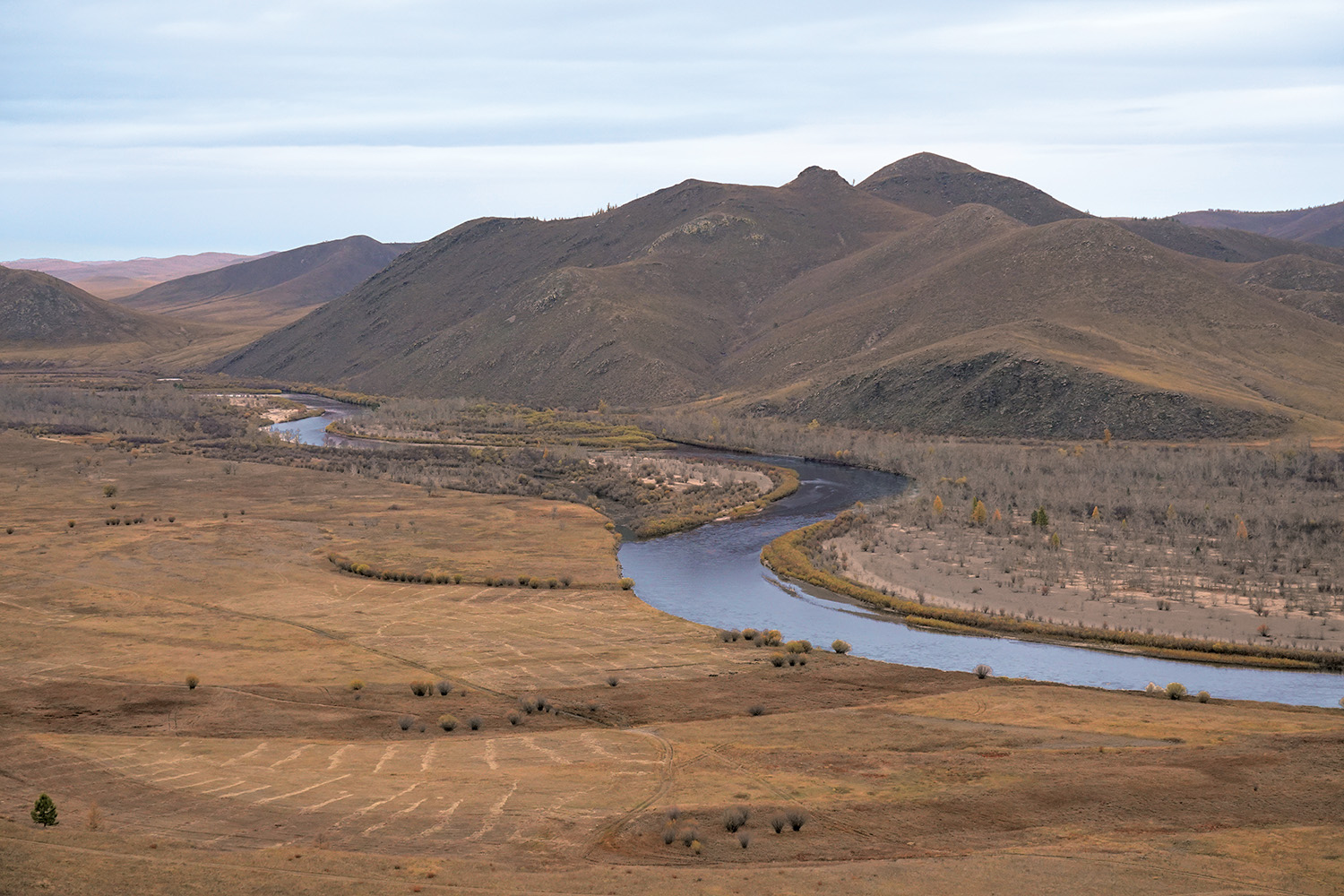The massive, mysterious salmonid—revered by conservationists and anglers alike—is declining in Russia’s Far East. A new Wild Salmon Center research project in Mongolia could help protect taimen across their range.

In early October, Dr. Matt Sloat found himself deep in the Mongolian outback, eating barbecue lamb by a campfire in the Amur Basin, surrounded by a host of locals. Some had spent the past few days fishing with him, but others wondered: who exactly was Sloat, and why was he here? He took the opportunity to explain.
“I’ve spent the last several years studying taimen,” said Dr. Sloat, Director of Science for the Wild Salmon Center, to a group that included WSC Russia Program Director Mariusz Wroblewski along with Mongolian regional administrators, game enforcers, members of a local taimen club, and fishing guides with Mongolia River Outfitters. “Mongolia just might turn out to be one of the best places to learn about this species.”
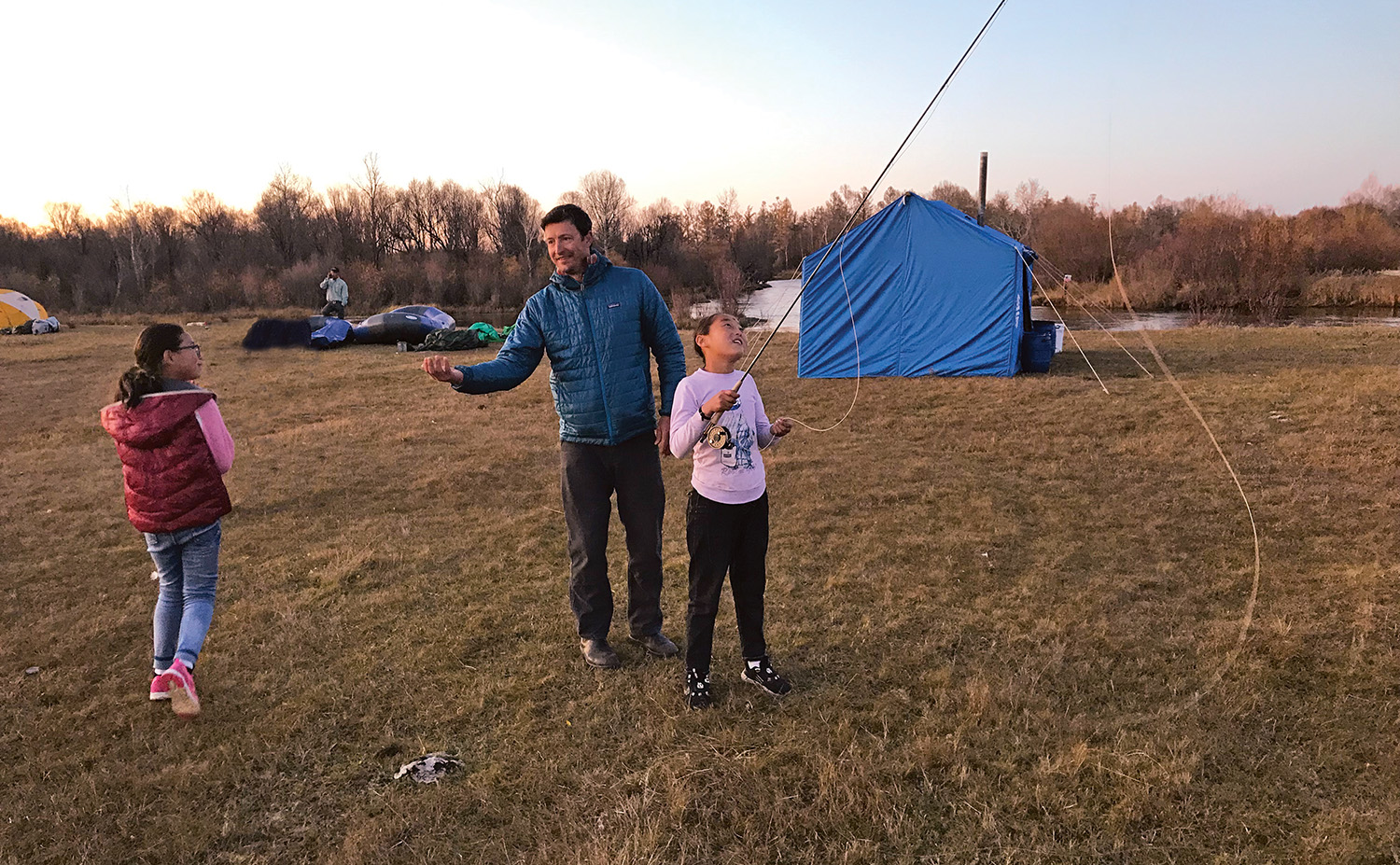
In the Russian Far East, Dr. Sloat told his dinner companions, remote taimen rivers like the Koppi and Tugur are fickle, fast-flowing, and routinely blown out by floods—factors that severely limit scientific field research. That’s a problem for Dr. Sloat, who relies on field data to inform scientific recommendations for salmon conservation.
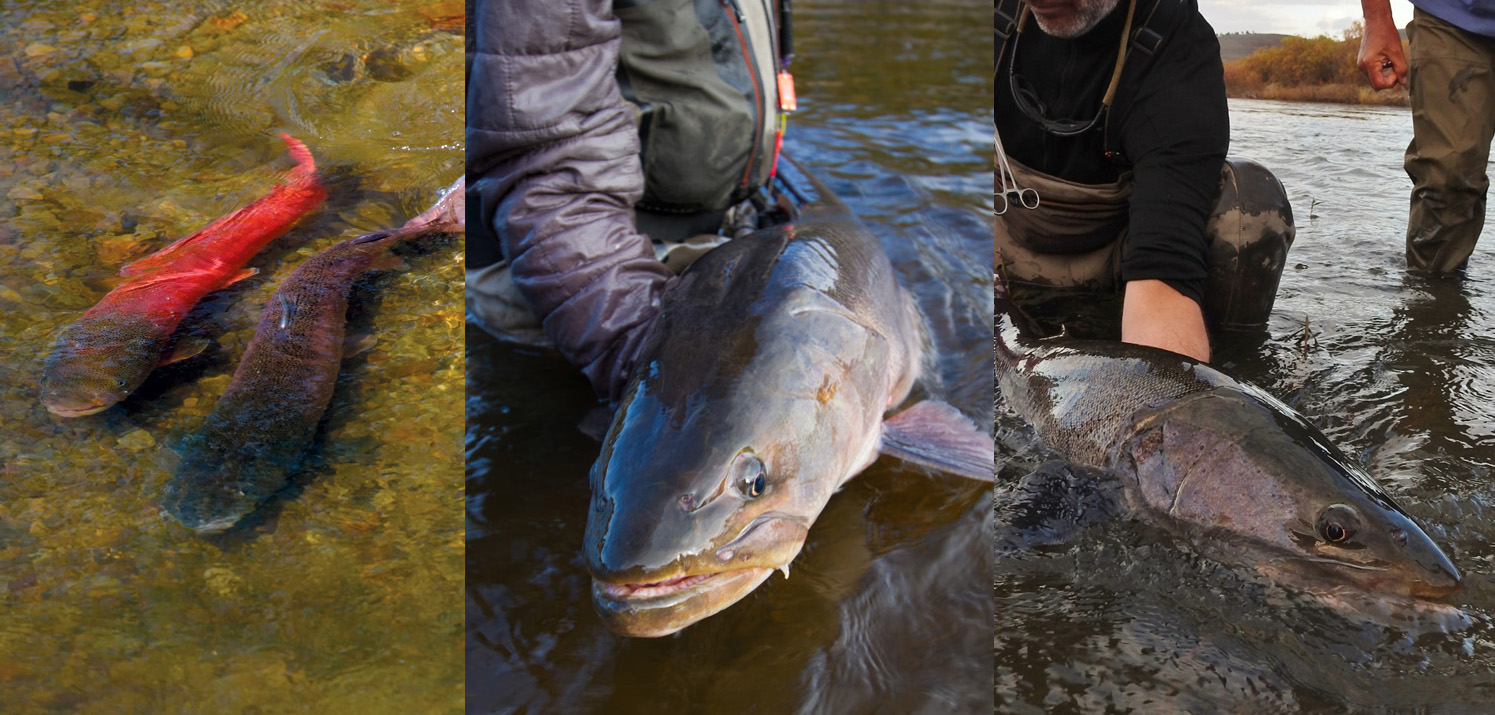
Taimen could use the help. The elusive apex river predators—the largest species of the salmon family—include both mammoth Siberian taimen (found in Mongolia and the northern Russian mainland) and Sakhalin taimen (found further south on the mainland, and on Sakhalin and Hokkaido islands). Both are rapidly declining across their range due to poaching and habitat destruction. Understanding their behavior, says Dr. Sloat, is key to protecting them.
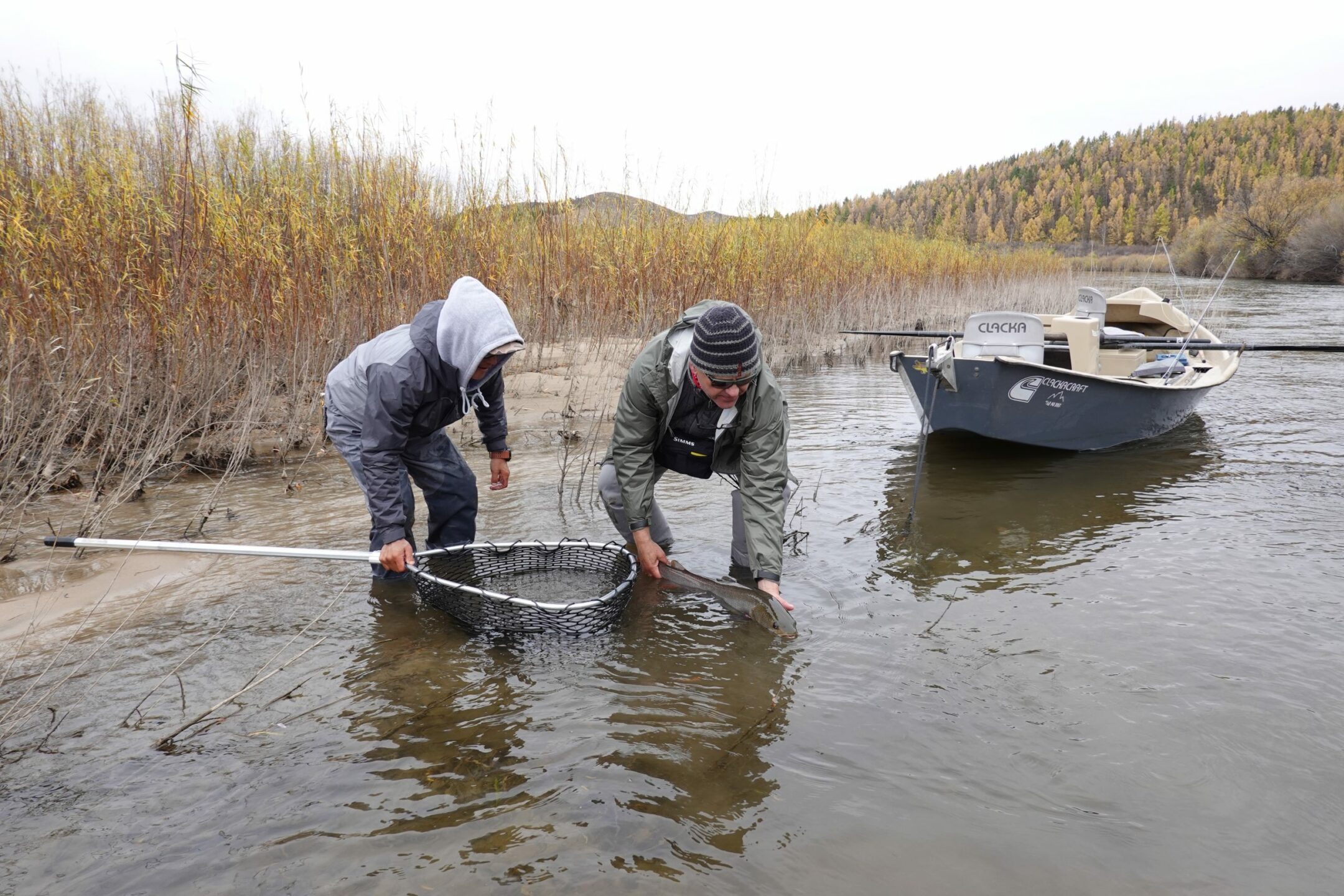
“Megafish are in sharp decline globally, and taimen are no exception,” Dr. Sloat explains. “Despite these concerns, we know very little about these fish. And that hinders our ability to safeguard their future.”
While Mongolian taimen have different diets than their chum-and-pink-salmon-devouring Russian counterparts, the populations are genetically similar. And crucially, Mongolian taimen are far more accessible—to fishermen, who easily land them in Mongolia’s clearer, calmer rivers, and to scientists like Dr. Sloat.

That ease of access is why WSC is partnering with Mongolia River Outfitters and local administrators to conduct a first-of-its-kind taimen research project over the course of 2020. During the October scouting trip, Dr. Sloat and WSC’s partners discussed logistics for the coming year’s planned field work in the Amur and Yenisei River Basins: spawning studies in spring, and summertime monitoring programs to track taimen abundance, feeding behavior, and river temperatures.
This research, Dr. Sloat says, aims to understand how taimen spawn, feed, and grow in rivers—both with, and without, the marine nutrients provided by salmon. Mongolian taimen serve as a control case for a key question: what happens to Russian taimen if Pacific salmon disappear from their foodweb?
Throughout the trip, Dr. Sloat and Wroblewski were energized by local enthusiasm for this research, from the local vice-governor, who joined the group for the barbecue dinner, to the youngsters from an after school ecology club who turned out one day for a lesson in fly casting.
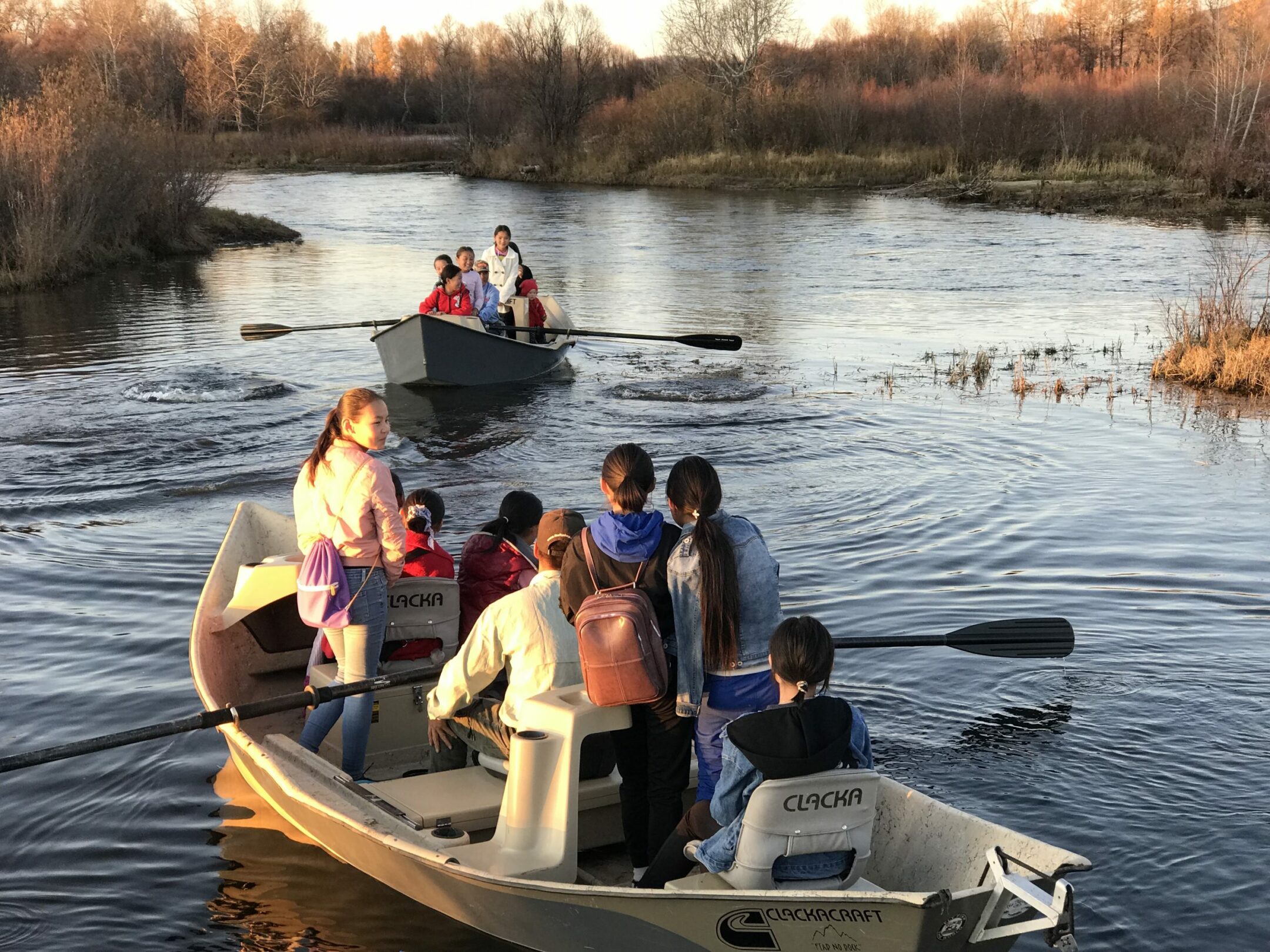
“Being on the river was terrific,” says Dr. Sloat, reflecting on the trip. “But my overwhelming impression was of the people, how engaged they were in stewardship, from those living nomadically, grazing animals on the steppe, to the river guides who depend on healthy taimen populations. I was extremely impressed by the reverence they showed for Mongolian rivers and taimen.”
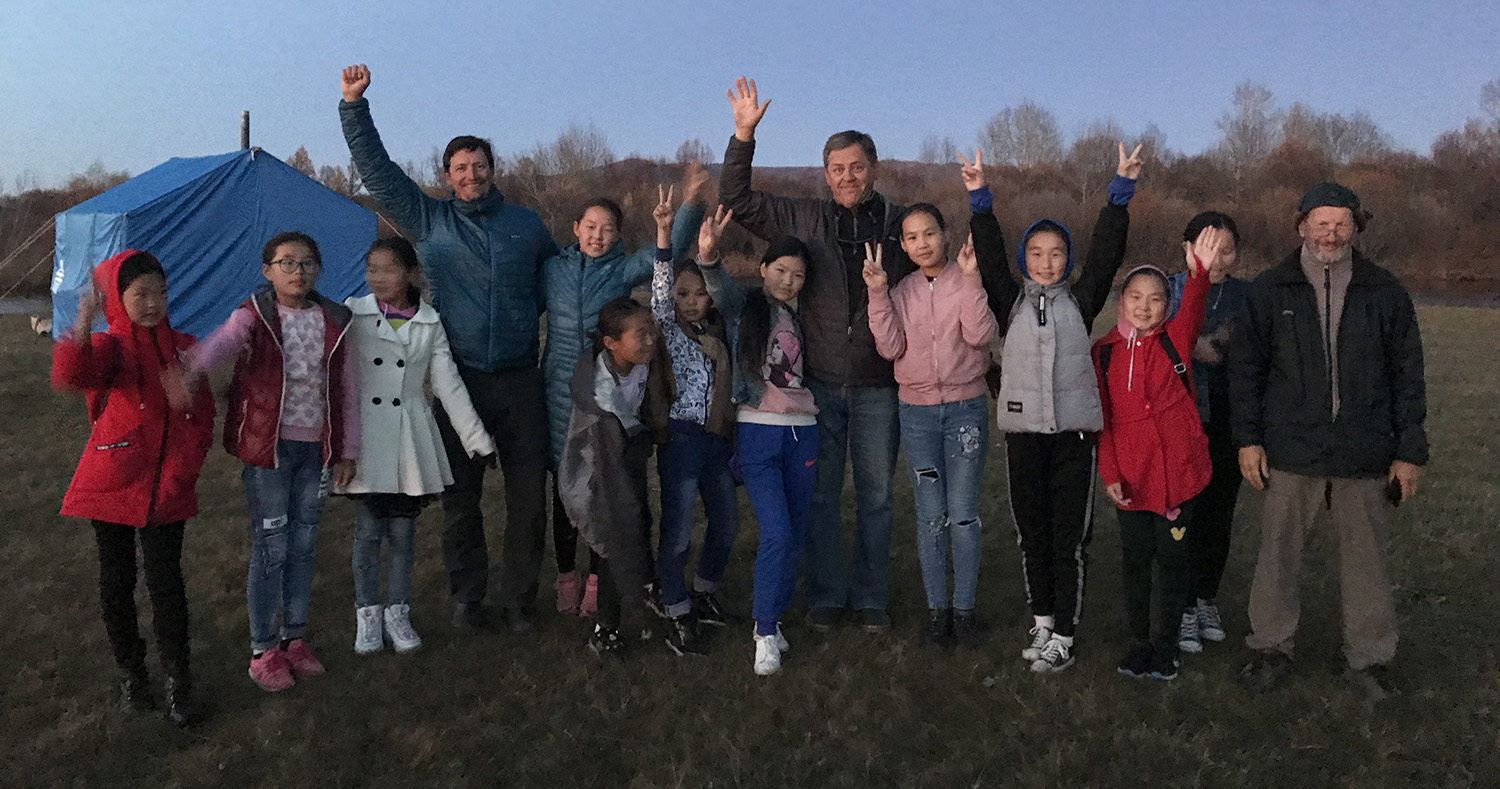
That reverence fills Dr. Sloat with hope. Cultural respect for natural systems—together with research that better illuminates taimen biology and behavior—will be key, he says, to protecting this mysterious, magnificent megafish.
The research aims to understand how taimen spawn, feed, and grow in rivers—both with and without salmon. Mongolian taimen serve as a control case for a key question: what happens to Russian taimen if salmon disappear?
